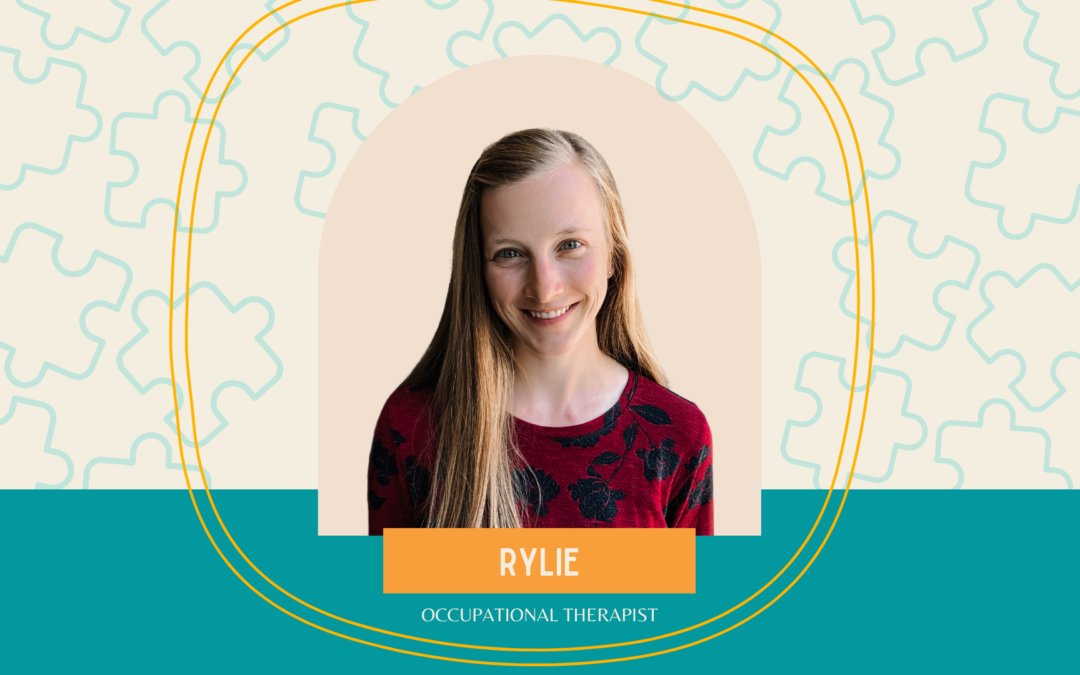ERGONOMICS: What to Look For and How to Decrease Injury

Hello! My name is Rylie Klinski and I am an occupational therapist (OT) at Partners In Excellence. I have been practicing as an occupational therapist for nearly two years and treat clients La Crosse, WI. One of the many reasons that I love Partners is seeing our client’s progress.
Today I will be discussing Ergonomics.
What on earth is ergonomics? According to Merriam Webster, ergonomics is, “an applied science concerned with designing and arranging things people use so that the people and things interact most efficiently and safely.”
When we interact with our environment with unsafe ergonomics, we are more likely to cause musculoskeletal injury. Even small changes in the alignment of the spine or other joints can lead to inflammation, pain, or even arthritis.
When it comes to our clients’ ergonomics, it can be a little tricky because they can’t always tell us when things don’t feel quite right, nor do they always have the body awareness to even notice it! As OTs, we have to be ergonomic detectives on the lookout for signs that our clients are showing compensations that could lead to musculoskeletal issues down the road. Here are some signs to look for:
- A “forward head” posture- seated or standing

- Shoulders rounding forward

Here are some things OTs do to change the environment, increase muscular strength, or improve flexibility to prevent deformity down the road.
- The “forward head” posture can come about when looking at something like a book or phone closely for an extended period of time. It could also be due to difficulty seeing, causing the child to lean their head forward to see better, so you may want to get your child’s vision checked to rule this out. This posture puts a significant amount of pressure on the section of spine in the neck (Cervical spine). If not corrected, this can lead to arthritis in the neck. Thankfully, this posture can reversed by strengthening the neck and upper back extensor muscles. One way this can be done by lying on the stomach while on a scooter and looking up while propelling forward. Lying on the stomach to read, complete puzzles, and play games is a great way to increase strength in the neck (just make sure the child’s head is not resting in the hands).
- Clients may adopt the “rounded shoulders” posture by maintaining a position in which the elbows are resting on the thighs while seated or when holding something out in front of them for an extended period of time, such as a phone or gaming device. It is also frequently seen in parents of small children, from carrying them frequently. This posture can lead to back and neck pain. The “rounded shoulders” posture can be alleviated by stretching out the chest muscles (pectoralis major, pectoralis minor). You can do this by rolling a towel and placing it on the floor, then lying on the towel with it along the length of the spine. To increase the stretch, lay your arms out to the sides to rest on the floor. (Never stretch until the point of pain, just to feel a gentle stretch.)
The 90-90-90 rule applies while children (and adults) are seated. Refer to the picture below found from Ergonomic Trends. The hips, knees, and ankles should all be at 90 degrees of flexion. This allows for proper weight distribution and keeps the joints in proper alignment. When children lean forward in their chair, sit forward in the chair (not allowing back to rest against seat), or when feet are dangling or crossed, it can lead to knee pain. Please make sure to check the 90-90-90 rule whenever your child is seated.

Please consult with your occupational therapist for ideas on how to improve your clients’ ergonomics or your own workspace ergonomics!
Our occupational therapy team is excited to continue to contribute to our Partners’ blog this year to offer insight into our field. Be on the lookout for more posts from our occupational therapists and certified occupational therapy assistants!
Resources
Ergonomic-Trends. Ergonomic and Correct Sitting Posture for Children- Some Guidelines. In ergonomictrends.com. Retrieved July 1, 2021 from https://ergonomictrends.com/ergonomic-sitting-posture-for-children/
Merriam-Webster. (n.d.). Ergonomics. In Merriam-Webster.com dictionary. Retrieved July 1, 2021, from https://www.merriam-webster.com/dictionary/ergonomics
Posture-Pro. 3 Exercises to Fix Rounded Shoulders. . Retrieved July 1, 2021, from https://posturepro.co/three-exercises-to-fix-rounded-shoulders/


Recent Comments